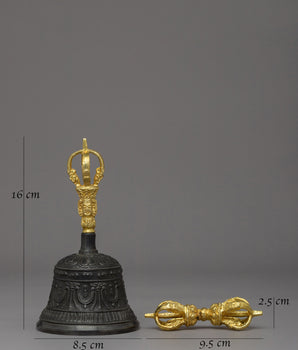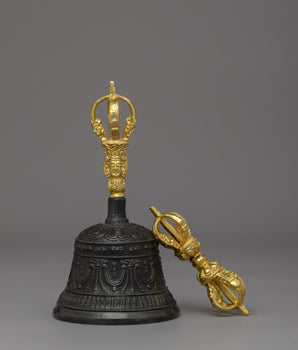
Yellow Kalachakra Mandala | Tibetan Art

100% AUTHENTIC

HANDMADE

FREE SHIPPING
Yellow Kalachakra Mandala
About Thangka
Our thangka is a handpainted Tibetan art done using traditional methods. It is a unique piece created using genuine 24K gold and natural stone colors.
Introduction to Yellow Kalachakra Mandala
Mandala literally means a circle. The Tibetan word for mandala is Kyilkhor, which means “center and surrounding environment .” In simple terms, it is a circle used as a visual aid for concentration and introversive meditation. Meditating using a mandala leads to the attainment of insights and it helps to increase one’s level of concentration.
It also helps to activate forces within oneself which culminates into “Siddhi ” or supernatural forces. The mandala is the graphic representation of this process. It is not only theoretical but practical as an operational scheme involving a clear plan for practical realization of the process within oneself. It thus becomes an instrument ( Yantra ).
It is believed that by just looking at a mandala one’s soul is spiritually purified. Thus, a mandala represents the palace of purity a magic circle cleansed of spiritual obstacles and impurities. The square of the sacred palace is enclosed in multiple circles of flame, vajra, and lotus. These three circles forming the outer rims of the mandala symbolize enlightenment, which the meditating person must gain before he or she can enter the illuminated palace. The mandala then consists of the inner square where the deity of the mandala resides.
------------------------------------------------------------------
Size: 10"/ 25 cm (width) x 10"/ 25 cm (height)
Materials: Cotton Canvas, Acrylic Colors, Genuine 24K Gold
------------------------------------------------------------------
THIS THANGKA IS HAND-PAINTED IN THE TRADITIONAL STYLE AND THE QUALITY IS HIGH
How can Thangka benefit us?Thangkas, which were formerly utilized as teaching aids, are now used as a meditation technique to assist in moving one closer to enlightenment. During rituals and ceremonies, devotional images serve as the focal point and frequently serve as a conduit for prayers and requests.
Shipping & Returns
We ship worldwide. Orders dispatch in 2–3 business days. International delivery typically arrives in 4–10 business days via DHL Express, depending on destination and carrier conditions. All items ship free globally.
Returns are accepted within 14 days of delivery. Products must be returned in original condition for a refund to be issued once received and inspected. Terms and conditions apply.











